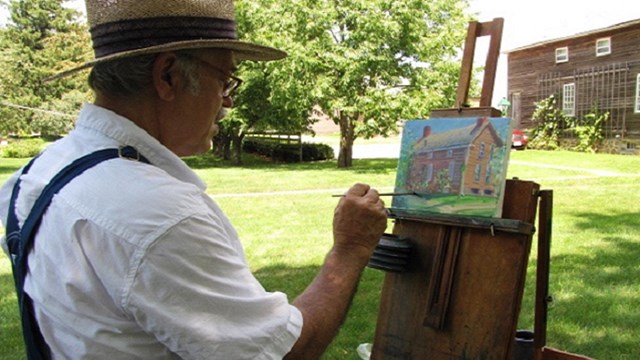
Once a church, the Amana Arts Guild preserves traditional art forms from the Iowa Colonies and passes techniques onto future generations
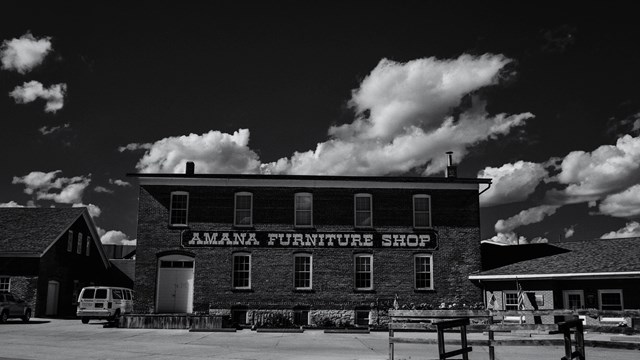
The Amana Furniture Shop occupies the former Calico Mill, which produced printed cloth for the national market
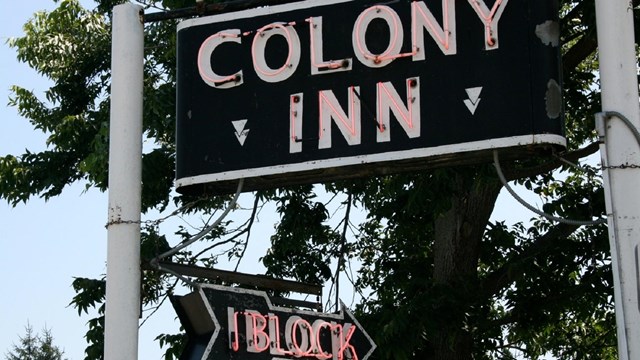
The Amana Hotel was built in 1860 to accommodate visitors. It continues to accommodate visitors, but now as a restaurant

Bakeries provided bread and other baked goods to the villages in Amana. Learn about the Amana Society Bakery and its role in the village
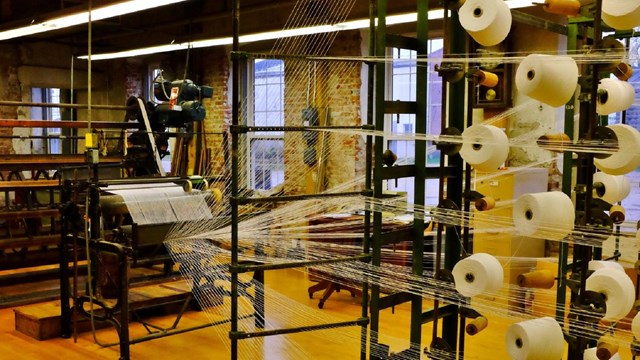
Construction of the Woolen Mill began in 1859 and it is still operating today. Their goods were known nationally
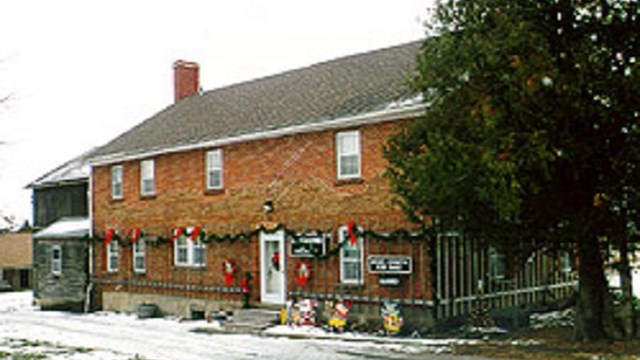
The Backerei was one of South Amana's bakeries. It was converted into a bed and breakfast, which has since closed
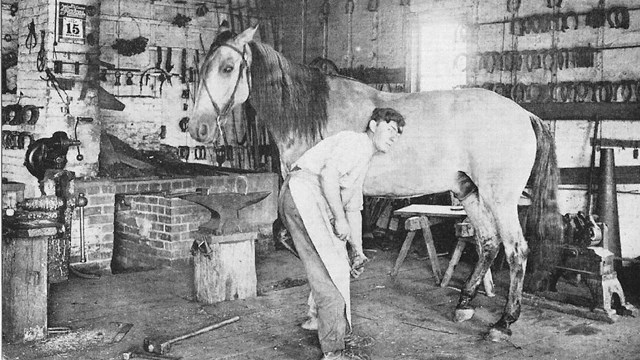
Blacksmith shops were integral in these rural villages. Learn more about the role the blacksmith played in the community

The Homestead Church was built in 1865 by the Community of True Inspiration. It is now a museum operated by the Amana Heritage Museum
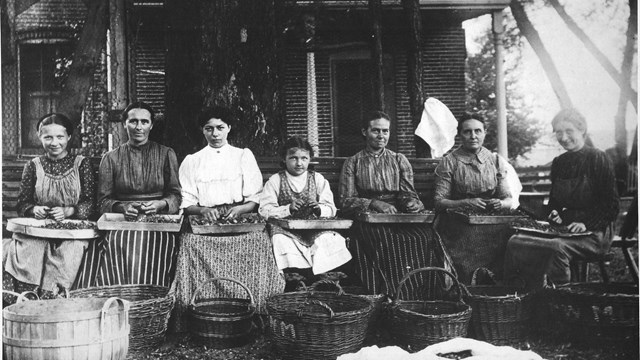
The Ruedy Kitchen House, next to the coopershop, was one of 50 kitchens that provided meals during the communal era of the Colonies
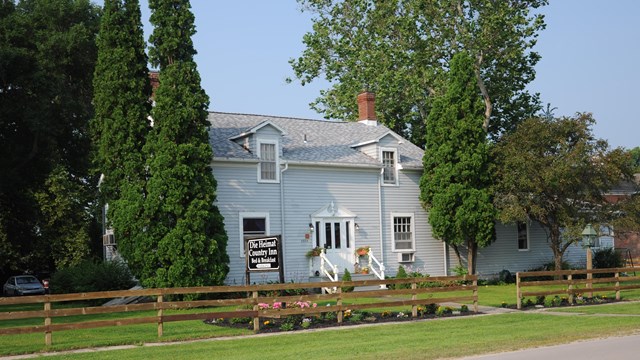
Die Heimat Country Inn occupies the only existing building in Homestead that was constructed prior to the town's purchase by Inspirationists
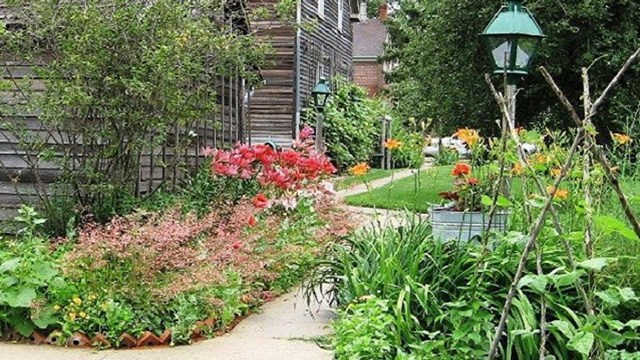
The drying house was integral to preserving fruits and vegetables grown in nearby gardens
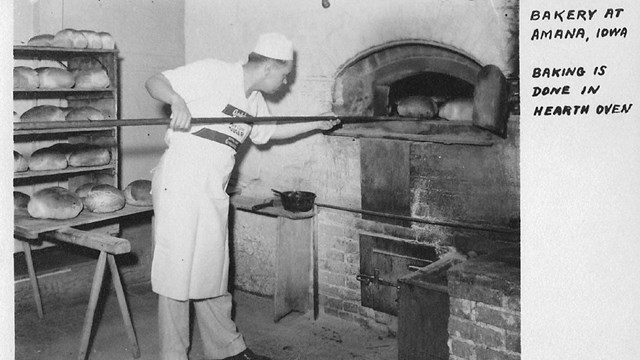
Bakeries provided bread and other baked goods to communal kitchens using traditionally German recipes. Learn about Hanh's in Amana
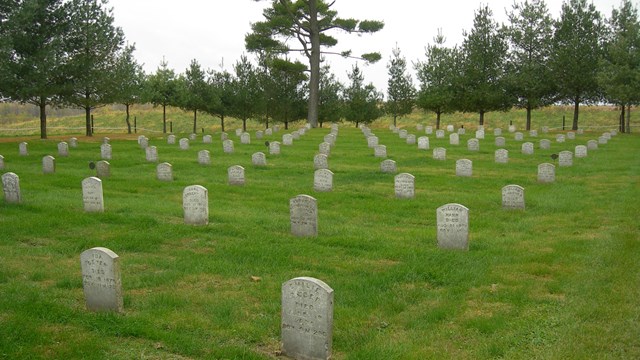
Cemeteries are organized in such a way that denotes equality among members. Learn more by reading about the cemetery in High Amana
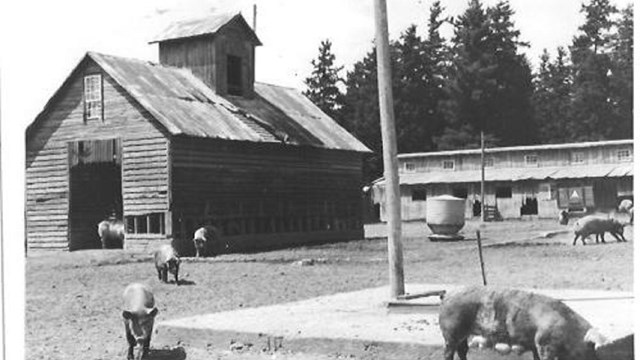
Each village in the Colonies contained a farm complex. Learn about the farm complex in High Amana
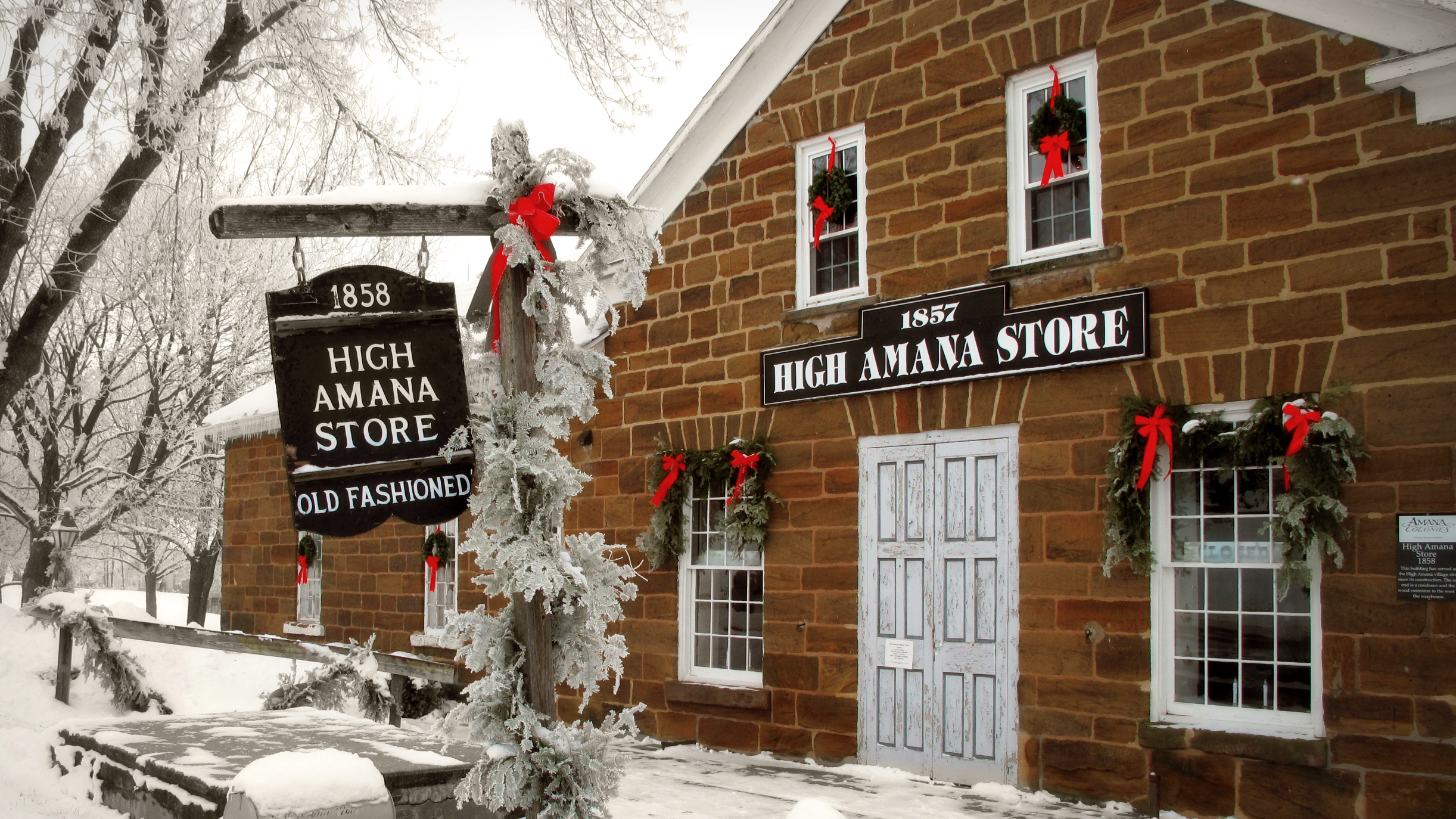
General stores provided necessities to the people in the Amana Colonies. Learn about one of these stores in High Amana
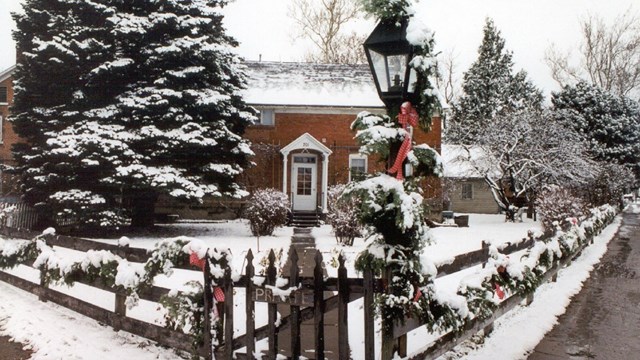
These are the most common building type found in the Amana Colonies. Several original dwellings made mostly of brick remain today

The Meat Shop and Smokehouse prepared meat for several kitchens in Homestead. Learn more about its role in the community

Lily Lake was formed when the Mill Race flooded a low area. It went on to play several important roles in the Colonies
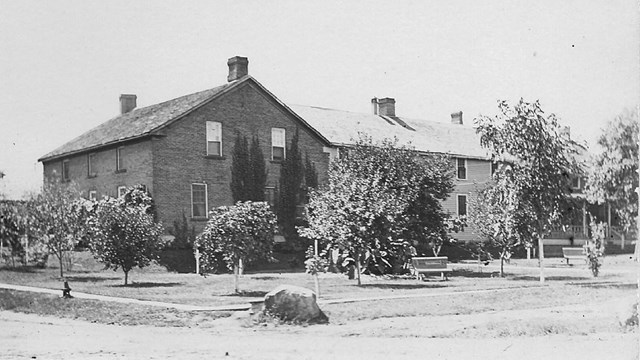
The Lower South Hotel accommodated tourists flocking to the Amana Colonies. Learn about it here
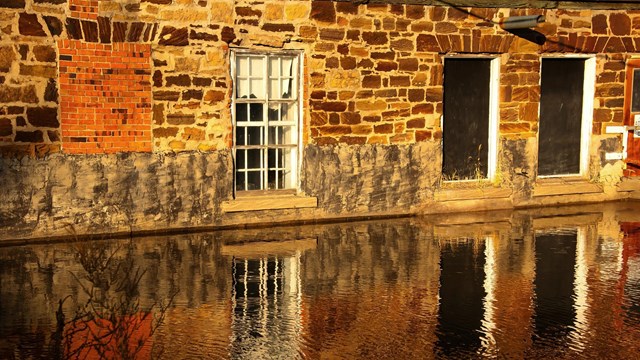
The Mill Race is a constructed, seven-mile-long canal. It originally provided power to the mills
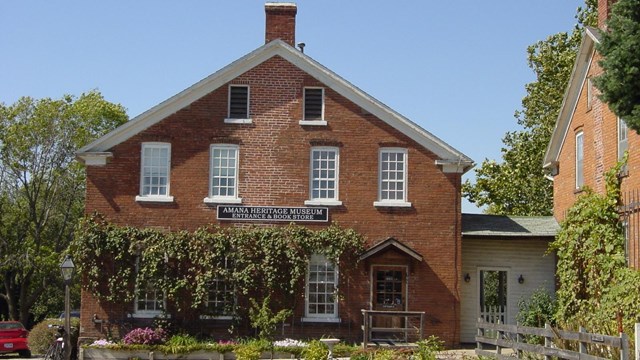
The Museum occupies a former kitchen house, school, and woodshed. It traces the history and development of the Colonies
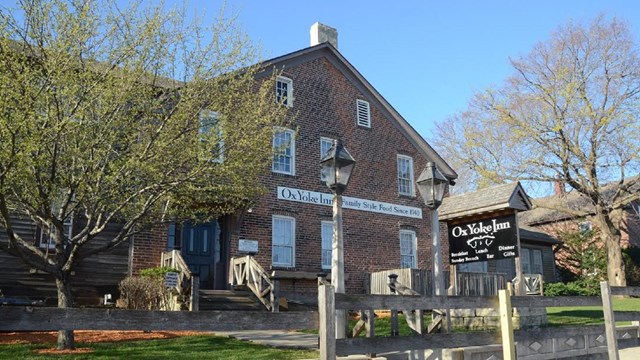
The Ox Yoke Inn occupies a former kitchen house, and currently operates as a restaurant
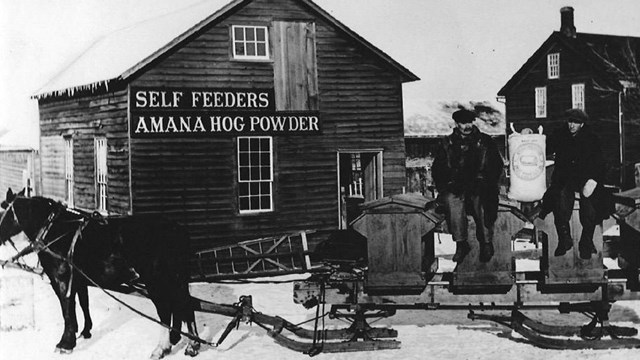
The Powder House was part of a pharmacy complex that produced powder additives for livestock
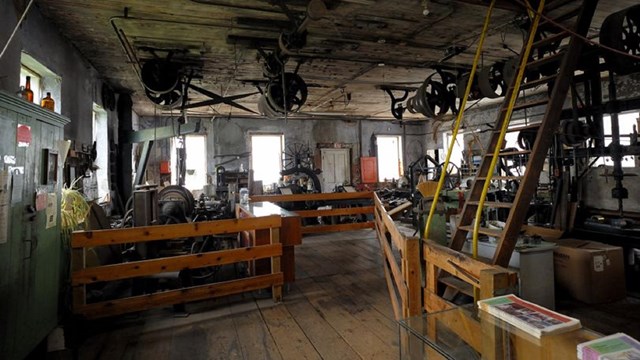
Metal work was important to repair components of the mills and farm equipment. Learn about the shop in Amana
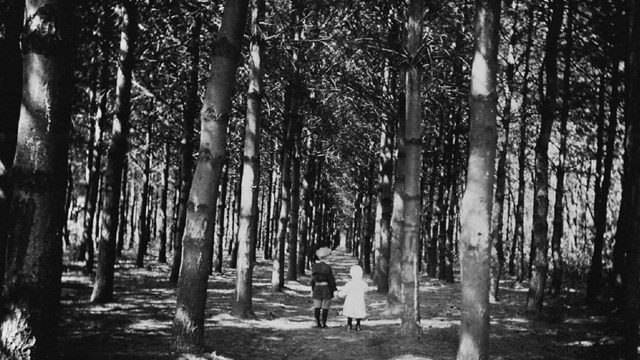
Schulwalds are groves of trees planted by residents of Amana. Learn about their roles in the Colonies
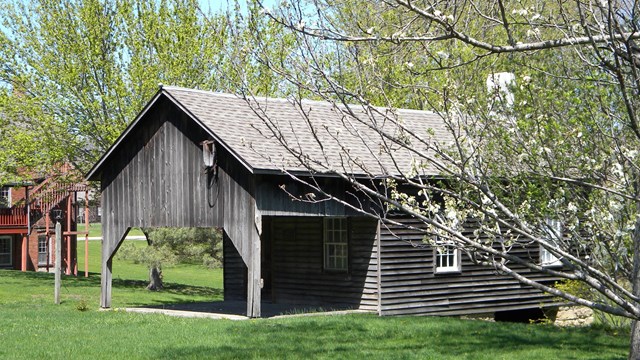
Schools in the Amana colonies provided for children from two to 14. In addition to general education, children would learn trades
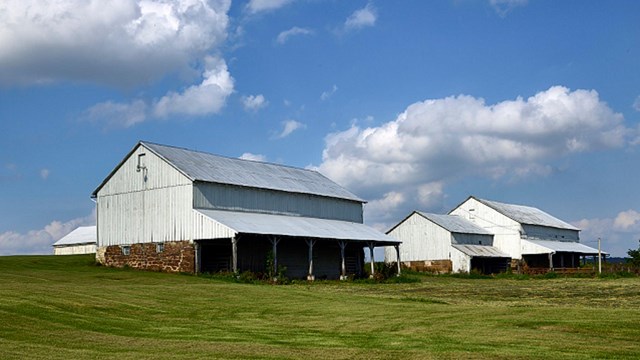
Taglöhners were hired to work in the Amana villages. While they lived alongside community members, they didn't officially join the Church
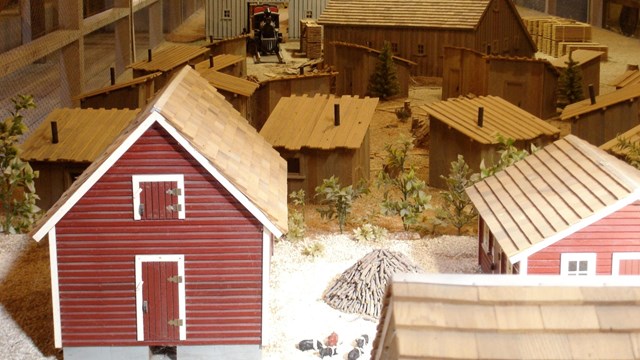
The Barn Museum houses the largest collection of miniatures, made by Henry Moore. Learn about it here

Farms complexes and barns played an important role in the Colonies. Learn more about the role the barns played in West Amana

General stores provided goods for residents of the Amana villages. Learn about the general store in West Amana
Last updated: January 4, 2018
